Delivery from $80
Worldwide Shipping Available
Free Pickup from Seaforth NSW
Previous
Next
We are proud to present a specially curated group exhibition of iconic female Western Desert Painters, and cordially invite you and your guest to join us as we celebrate these artists and their work.… Continue reading
Continue readingAcrylic on Linen
183 x 244 cm
Sold SoldAcrylic on Linen
183 x 244 cm
Sold SoldAcrylic on Linen
183 x 244 cm
A$29,000 Enquiry OnlyAcrylic on Linen
183 x 244 cm
A$37,000 Enquiry OnlyAcrylic on Linen
183 x 244 cm
A$23,000 Enquiry OnlyAcrylic on Linen
183 x 244 cm
A$17,000 Enquiry OnlyAcrylic on Linen
183 x 244 cm
A$29,000 Buy NowAcrylic on Linen
66 x 71 cm
A$3,400 Buy NowAcrylic on Linen
71 x 66 cm
Sold SoldAcrylic on Linen
66 x 71 cm
Sold SoldAcrylic on Linen
66 x 71 cm
Sold SoldAcrylic on Linen
66 x 71 cm
Sold SoldAcrylic on Linen
112 x 102 cm
A$7,000 Enquiry OnlyAcrylic on Linen
112 x 102 cm
A$7,000 Enquiry OnlyAcrylic on Linen
112 x 102 cm
A$7,000 Enquiry OnlyAcrylic on Linen
112 x 102 cm
Sold SoldAcrylic on Linen
112 x 102 cm
Sold SoldAcrylic on Linen
112 x 102 cm
Sold SoldAcrylic on Linen
112 x 102 cm
A$7,000 Enquiry OnlyAcrylic on Linen
112 x 102 cm
Sold SoldAcrylic on Linen
112 x 102 cm
A$7,000 Enquiry OnlyAcrylic on Linen
112 x 102 cm
Sold SoldAlways be the first to know about exhibitions, events and new art releases.
We are proud to present a specially curated group exhibition of iconic female Western Desert Painters, and cordially invite you and your guest to join us as we celebrate these artists and their work. Don’t forget to RSVP!
Featuring: Tjungkara Ken, Jorna Newberry, Mary Brown Napangati, Yinarupa Nangala, Debra Yungut Nakamarra, Kayi Kayi Nampitjinpa, Sandra Ken, Jacqlin Reid Nakamarra, Eileen Napaltjarri,
Please contact us at the gallery with any early enquiries.
Make sure you are subscribed to our VIP list to always be among the first to view a new exhibition!
October 15, 2022
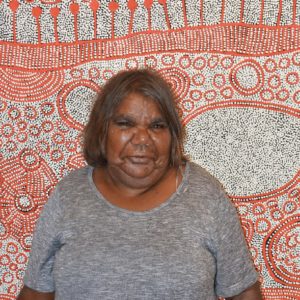 BORN 1961
BORN 1961
REGION Mukula/Kiwirrkurra
LANGUAGE Pintupi
Yinarupa Nangala was born circa 1948 in Kiwirrkurra and has gained recognition as a leading figure in Australia’s contemporary Aboriginal art scene since her entrance into the artworld in 1996. With a rich traditional background influenced heavily by the Papunya Tula art movement, of which her late father, the esteemed Anatjari Tjampitjinpa, was a founding member, Yinarupa Nangala has earned her status as a senior Western desert Painter.
Early in her career Yinarupa developed a distinctive style of weaving together her rich spiritual heritage as well as the physical environment of her homeland. Predominantly using black and white, Yinarupa specifically paints the ‘Ngamurru’ in Kiwirrkurra, WA, a meeting place for aboriginal women where ceremonial business is conducted. The area is also renowned for its abundance of the Acacia seed, which once collected is ground into flour and used to make ‘latja’, a damper bread used in aboriginal ceremonial rituals. The various shapes in her work depict important features of the landscape including rock holes, which serve as important water sources, women’s meeting places and abundant food areas.
Yinarupa’s unique art uses a combination of traditional and contemporary symbols providing an aerial view of the Pintupi area. This mixture ensures her work resonates with a contemporary audience of the traditional aspects of her culture. Yinarupa now resides in Alice Springs with her five children where she continues to evolve her painting style with frequent visits to her homelands near Jupiter Well in WA.
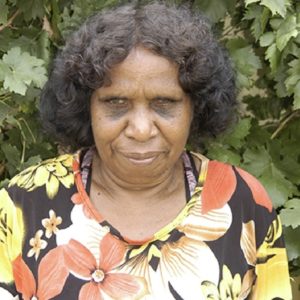 BORN 1964
BORN 1964
REGION Kintore
LANGUAGE Pintupi
Debra Young Nakamarra is the eldest daughter of esteemed Pintupi artists Walangkura Napanangka and Johnny Yungut Tjupurrula. Debra was born at Papunya in 1964 and later moved to Kintore community. In 1971 the desert painting movement began at Papunya and some time after that both her parents began to paint the traditional stories of their country. Debra Young Nakamarra began her own painting career in 1984, at the time when the women artists from the communities at Kintore and Haasts Bluff gathered to start making their own paintings. Prior to that time the women artists had assisted the men folk of their families with their painting, but had not created their own stories from the women’s Dreaming tradition.
Debra Young Nakamarra learned the skills of painting from her mother Walangkura Napanangka and the ceremonial stories of the Women’s Dreaming sites associated with the Dreaming Ancestor Kutungka Napanangka. In the Tingari narratives that make the Creation law for Pintupi people, Kutungka Napanangka made a journey through the artist’s country on her way to the east. Locations where the Ancestor stopped became ceremonial sites for the people, and the women continue to sing the songs and perform the ceremonial dances that celebrate this Creation journey.
When Debra Young Nakamarra began painting, the stories associated with these Women’s ceremonies provided the subject for her work. She uses the iconography that she learned from her mother’s paintings, which tie in strongly with the broader painting tradition of the Western Desert. Debra Young Nakamarra has established her own body of work around this theme and developed colour groupings that are typical of her work.
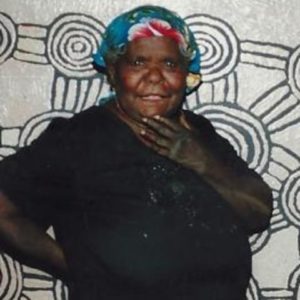 BORN 1946 (Deceased)
BORN 1946 (Deceased)
REGION Kintore
LANGUAGE Pintupi
Kayi Kayi Nampitjinpa was born in 1946 in her traditional country of Kiwirrkurra, North West of Alice Springs. Kayi Kayi was one of the second generation women artists whose early beginnings centered around assisting the male artists of Papunya—but who emerged with her own unique and sophisticated style. In 1996, She began painting in the Pintupi community at Kintore—founded in the early 1980’s when the Pintupi tribes left the government reservation at Papunya.
Kayi Kayi primarily painted rock hole dreaming and women’s ceremony from her ancestral country around Kiwirrkurra—the sacred Tingari cycle underpinned her works. Tingari are a group of mythical characters of the Dreaming who travelled over vast stretches of the country, performing rituals and creating and shaping particular sites. The Tingari women usually followed the Tingari men and were accompanied by novices.
It is the Tingari men and women’s travels and adventures that are enshrined in a number of song cycles. It is only through initiation ceremony that Kayi Kayi had permission to paint the stories.
Kayi Kayi’s work is held in major public and private collections including; Museum and Art Gallery of the Northern Territory, Darwin, Hank Ebes Collection, Melbourne, Araluen Arts Centre, Alice Springs, Gantner Myer Collection, San Francisco, Artbank, Sydney, National Gallery of Victoria, Melbourne University of New South Wales, Sydney. She was a finalist in the 2000 17th NATSIAA, Darwin.
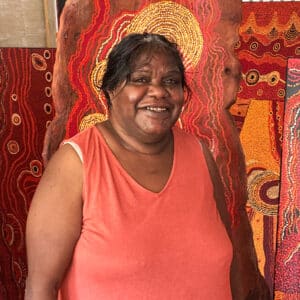 BORN 1969
BORN 1969
REGION Amata
LANGUAGE Pitjantjatjara
Tjungkara Ken was born in Amata (SA) in 1969 and was one of the first young artists to begin working with Tjala Arts (in 1997). Ken said, “I do paintings about my country. That’s ngura: rockholes and the land, the hills and big creek beds. Sometimes I do stories about the Seven Sisters and about country.” She works both as a solo artist and with family, and is one of five sisters who have painted as Ken Sisters Collaborative. Their painting Seven Sisters was awarded the Wynne Prize in 2016.
Ken and her sister Yaritji Young were also profiled at Sydney Contemporary in 2017 where they responded to paintings by Ben Quilty. Of this exchange, Young noted, “What we do share with artists outside the Lands when we have the opportunity to connect is also so very important. We share ideas about colour and movement, about scale and energy. We share our love for painting… Sometimes paintings can talk to each other just like artists talk to each other.” For Tjungkara, the project was about paint on the canvas, about looking at what Quilty was able to achieve with a palette knife and its similarity to the way she does her waka waka (dots). The painting celebrates colour and tells a story that is hers, observing the way colour may highlight, define and create depth and contrast.
Ken paints both her mother’s country (Wingalina), the ngintaka dreaming, and her father’s Apara story. She said, “Now that I know how to do really good paintings, I only paint with punu sticks and not a brush… When we do paintings it’s like looking down from the top, like looking from an aeroplane.”
Ken is part of the Ken Sisters Collaborative (along with Yaritji Young, Freda Brady, Maringka Tunkin and Sandra Ken), who were awarded the Wynne Prize in 2016. She was a finalist in the 2017 Archibald Prize and the 2019 Wynne Prize and is a repeat finalist in the Telstra Award (2017, 2015, 2014, 2013, 2010. She has exhibited widely throughout Australia and her work is represented in collections including Artbank, Art Gallery of South Australia, National Gallery of Australia, National Gallery of Victoria, QAGOMA, and private collections include the Corrigan Collection, Lagerberg Swift Collection, Laverty Collection, Richard and Harriette England Collection.
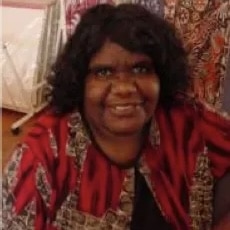 BORN 1968
BORN 1968
REGION Amata
LANGUAGE Pitjantjatjara
Sandra lives in Amata with her husband Dick and four children. Sandra’s first art experiences were working and learning to paint in the craft room at Tjurma homelands Arts and Craft centre, Amata. Sandra’s painting further developed with the opening of Minymaku Arts.
Mother Country: Aron
Father’s Country: Amata
Ken is part of the Ken Sisters Collaborative (along with Tjungkara Ken, Yaritji Young, Freda Brady, and Maringka Tunkin), who were awarded the Wynne Prize in 2016.
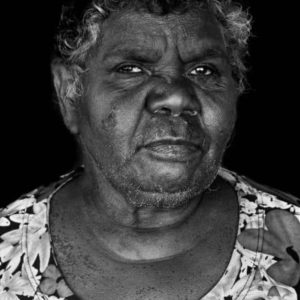 BORN 1959
BORN 1959
REGION Kintore
LANGUAGE Luritja
Eileen has consolidated her reputation as one of the most important second generation Aboriginal artists of the Western Desert movement. Eileen Napaltjarri is represented in major collections including in Australian National Gallery, Art Gallery of NSW and Artbank Collection. Japingka Gallery curated a solo exhibition of EileenNapaltjarri’s paintings in 2008. Napaltjarri won the “emerging artist” category of the Redlands Westpac Art Prize in 2005. In 2006, journalist and writer Nicolas Rothwell named her as the successor to Papunya Tula’s most significant founding women: Makinti Napanangka, Wintjiya Napaltjarri and Tjunkiya Napaltjarri. Australian Art Collector magazine, in its annual survey of Australian art, included Napaltjarri in its 50 Most Collectable Artists for 2008
COLLECTIONS
 BORN 1958
BORN 1958
REGION Kintore
LANGUAGE Pintupi
Jacqueline Reid Nakamarra is one of the daughters to the very well-known and respected artist, Makinti Napanangka (dec.) and sister of Winnie Reid Nakamarra. Both of Makinti’s daughters have been painting the stories as passed down by their famous mother.
Her paintings depict designs associated with the sites of Lupulnga, a rockhole situated south of the Kintore Community. The Peewee (small bird) Dreaming is associated with the site, as well as the Kungka Kutjarra, or Two Travelling Women Dreaming. During mythological times a group of ancestral women visited this site holding ceremonies associated with the area, before continuing their travels north to Kaakuratintja (Lake MacDonald) and later the Kintore area.

BORN Circa 1953
REGIONKiwirrkura
Mary Brown Napangardi was born in approximately 1953 and comes from a bush camp at Mandarine, south-west of Yuendumu in Central Australia. She is a Warlpiri woman. As a young girl she lived a traditional lifestyle learning about gathering bush tucker, bush medicine, craft and bead work for traditional ceremonies as well as learning the important cultural knowledge and Dreaming stories of her country. Whilst she was still relatively young her family was picked up by a white man and relocated to Yuendumu Community, an Aboriginal settlement approximately 3 hours from Alice Springs.
She “grew up” at Yuendumu and met her husband Mick “Pegleg” Brown Tjampitjinpa (who sadly passed away) a fellow artist there. They later relocated to Mount Liebig and then onto Nyirripi Community.
She later remarried Ronnie Tjampitjinpa a celebrated and talented Western Desert artist and together they have three sons who live in Yuendumu.
Mary first began painting in the early 1990’s at first sporadically as there was no art centre where she lived. In 2005 she began painting for Warlukurlangu Artists Aboriginal Corporation in Yuendumu and since that time has began painting with much more frequency. Her artworks consist of themes and scenes associated with women’s ceremonies and her Jukurrpa (Dreaming stories) relate to her land, its features, and flora and fauna. These sacred and important stories have been passed down to her from her father’s side for generations. She uses traditional iconography and symbols within her artwork and uses an unrestricted palette to develop a modern interpretation of her Dreamings.
Several of Mary’s family members are also successful artists including her sisters Jeannie Napangardi Lewis, Margaret Napangardi Brown, Margaret Napangardi Turner, and her niece Joy Nangala Brown.
The below notes were translated verbatim by Bess Nungurrayi Price during an interview with Mary. Bess is a former minister in the Northern Territory Government. She was born in Yuendumu living a traditional life. Bess is an accomplished artist in her own right and a close relative to Mary and her extended family.
Mary’s parents were traditional people from the Mina Mina area which lies between Nyrripi and Lapi Lapi. Mina Mina is also traditional country to Mary’s extended family which includes Paddy Lewis Tjapanangka being the father of the late Dorothy Napangardi, Dorothy being a cousin to Mary. Pegleg Tjampitjinpa was Mary’s brother in law having been married to Mary’s sister Margaret.
Mary and her extended family were brought into Mount Doreen by the anthropologist Donald F Thomson in 1957 ( reference “ Bindibu Country )
After the establishment of Nyrripi community, which lies 160km west of Yuendumu, and on the south west boundary of Mount Doreen Station which encompasses an area of 8000 km sq, the family re-located, she now bides her time between Kintore and Nyrripi with her husband Ronnie Tjampitjinpa.
 BORN 1959
BORN 1959
REGION Angus Downs
LANGUAGE Pitjantjatjara
Jorna Newberry is a Pitjantjatjara artist who was born around 1959 in Angus Downs. She currently splits her time between Alice Springs, where her family live, and Warakurna- choosing to live between modern culture and a more traditional one of her Indigenous heritage.
When Jorna is in her lands, she often goes bush with the women of the community for sacred ceremonies, passing on the knowledge of her heritage onto her two daughters. When she goes camping, she hunts for kangaroo and goanna and collects bush tucker such as honey ants, witchetty grubs and berries.
Her style is multi-layered and abstract to maintain the secrecy of important culture matters. She has worked closely with her Uncle, Tommy Watson and developed her own style.
“Tommy has had a big influence on me. He teaches me to be respectful in the way I paint” she says, favouring a more abstract approach to her work rather than the figurative approach of the Papunya Tula artists.
Jorna initially started painting in the mid-1990s at Warakurna. Her paintings refer to the country of Irrunytju in the Western desert and the significant places, traditionally of spiritual knowledge and the ancestral stories, which are in bedded in the land.
Tommy Watson has described Irruntyju as, “My grandfather’s country, grandmother’s country. When they were alive, they would take me around the country, when I was a kid. That dreamtime country. That’s why we look after the country, go out whenever we can, see if the rock-holes are good”.
Tjukurpa (Wind Dreaming) is a story of her mother’s country at Utantja, a large stretch of sacred land where people go for ceremonial rites. “The wind ceremony forms winds, creates air to cool the lands,” she says, explaining that the cooler the land gets, the easier it is for hunting.
Newberry uses a very vibrant and dramatic palette in her artworks; the canvases are alive with linear dotted flows that describe movement, culture and history.
RVSP for ‘Western Desert Women’ – a Group Exhibition 2022
Harvey Galleries was founded by the Harvey family in 1994 with an eye to establish a dynamic and inclusive contemporary art space on the North Shore of Sydney. For almost three decades we have expanded our reach to over three gallery locations and an ever expanding stable of the best artists Australia has to offer.
Harvey Galleries acknowledges the traditional custodians of the lands upon which our galleries stand. The Guringai people (Seaforth), the Gadigal people of the Eora Nation (Sydney), and the Bunurong Boon Wurrung and Wurundjeri Woi Wurrung peoples of the Eastern Kulin Nation (Melbourne).
We pay our respect to Elders past and present.
Always be the first to know about exhibitions, events and new art releases.